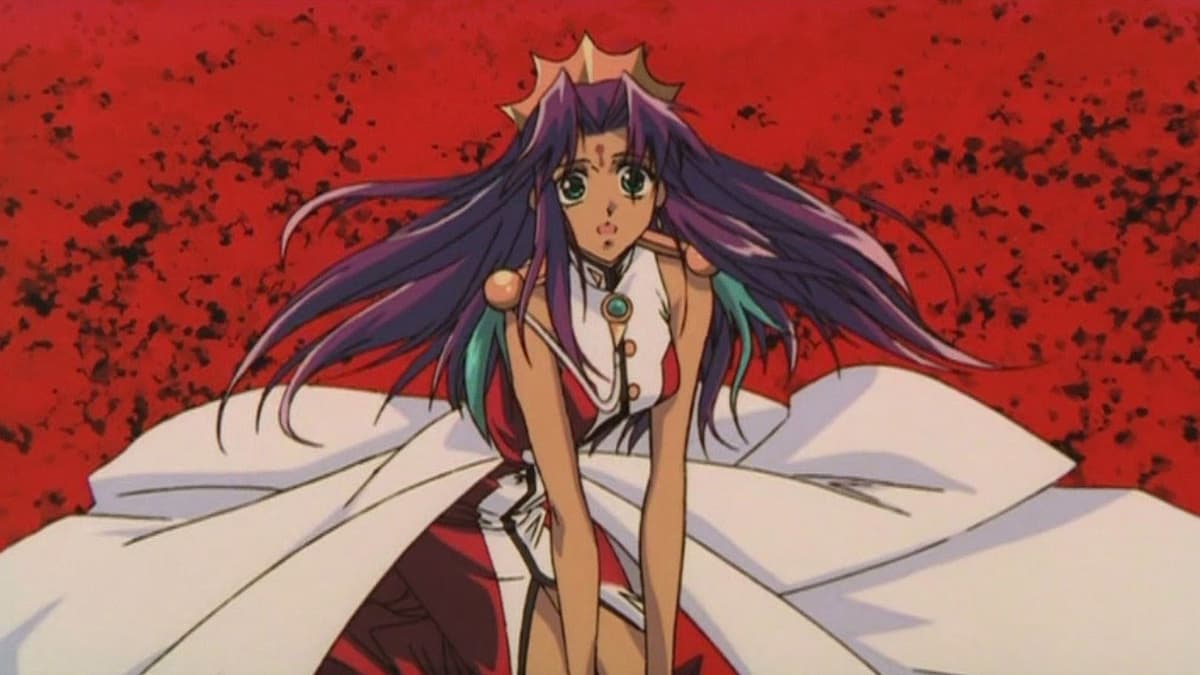Can we please talk about how dark, gorgeous, and gay ‘The Adolescence of Utena’ is?

Last week, the 1999 film The Adolescence of Utena had a special one-week screening period in Japan. Intrigued by a friend’s excitement and praise for the film’s beauty and wanting to make up for my cardinal sin of never having watched Revolutionary Girl Utena, I walked in blind. I walked out a changed woman.
The Adolescence of Utena is not a sequel to Revolutionary Girl Utena, Kunihiko Ikuhara’s legendary shojo anime series. Instead, the relationship between the two is similar to the relationship between the TV series Neon Genesis Evangelion and the four Evangelion Rebuild films. In other words, they tell the same base premise with the same characters, but the ending and outcome are very different.
Adolescence is widely noted for being more metaphorical, more boldly capital-A “Artistic,” and much darker. It’s also notable for making the relationship between Utena and Anthy, which is more teased than shown in the TV series, much more explicitly present.
While Revolutionary Girl Utena enjoys god status among anime fans, The Adolescence of Utena is much more mysterious. Part of that mystery is that it’s significantly more difficult to find. It’s also mysterious because of the contents of the film itself; Adolescence is very abstract and surreal.
“What the hell did I just see?” I thought (in a positive way) as the lights came on in the theater. The question and the film itself have not strayed far from my mind since.
A work of art
The Adolescence of Utena is hands down one of the most beautiful films I’ve ever seen. Not “animated films,” just “films.” Only Akira comes to mind as a competitor.
The Adolescence of Utena is stunningly animated and filled with many singularly striking images and gorgeous shot compositions. The film also has many unconventional set pieces, seemingly for purely aesthetic reasons.
For example, my friend told me ahead of the film that in Revolutionary Girl Utena, Ohtori Academy, where Utena and Anthy attend school, is more or less a normal school. In The Adolescence of Utena, it’s a labyrinth of staircases, shooting platforms to seemingly nowhere, spiraling towers, and tight walkways. Does it make sense, logically? Who cares. It’s a marvel to behold.
I felt as if a piece of high art had been hidden from me my whole life. From a composition standpoint alone, The Adolescence of Utena is the kind of film that should be taught and discussed in schools and art classes.
It’s not just the visuals. Everything about this film is bold. According to The Japan Society, the film is just as inspired by Riyoko Ikeda’s The Rose of Versailles as it is by the works of German-Swiss poet and novelist Herman Hesse, and something about that wide breadth just makes sense.
SPOILERS for the film, but in the final act, Utena is transformed into a car for Anthy to drive in an escape attempt. It’s a perfect example of the film’s priorities. The sequence is rich in metaphor—the feeling of freedom, the struggle of transitioning from adolescence to adulthood—but it obviously makes little logical sense. But getting hung up on those details will make you forget what this film tries to do.
Why not a car?
Bold in its relationship portrayal
There’s another way in which The Adolescence of Utena is significantly bolder than Revolutionary Girl Utena. It makes the romantic nature of Utena and Anthy’s relationship unavoidably explicit.
The relationship is more implied in the TV series, even though every friend who has ever talked to me about Revolutionary Girl Utena has gushed about it being “very beautiful and very gay.” The Adolescence of Utena is even more so.
The film’s queerness is immediately apparent, with Utena in a boy’s uniform from the start. Contrary to the show, she has a male-coded bob haircut, and her long locks only grow out due to the influence of Anthy’s magic during battle.
Anthy, meanwhile, sexually propositions Utena. Despite split opinions among the film’s staff, director Kunihiko Ikuhara made the executive decision to show Anthy and Utena kissing.
As gorgeous as it is, and as gorgeous as its central lovebirds are together, it should be stated Adolescence of Utena is a tonally dark film. I would caution a trigger warning for those sensitive to sexual assault (it’s not depicted, but it’s implied).
That said, regardless of whether you’ve seen the Utena series or not: find this film.
Have a tip we should know? tips@themarysue.com